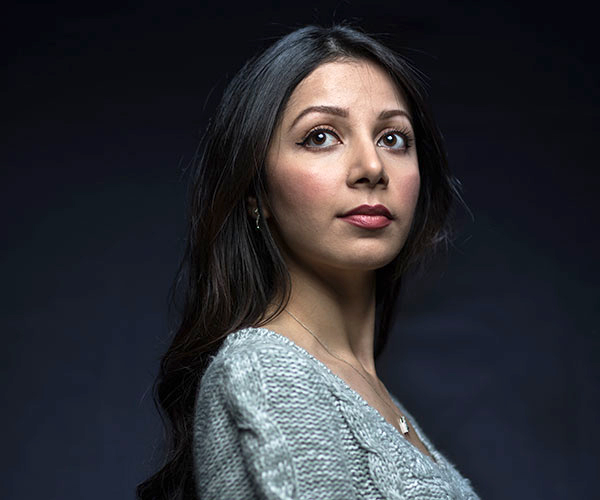
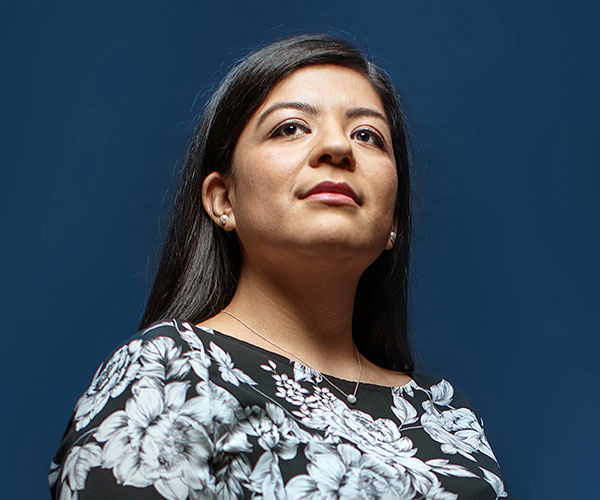
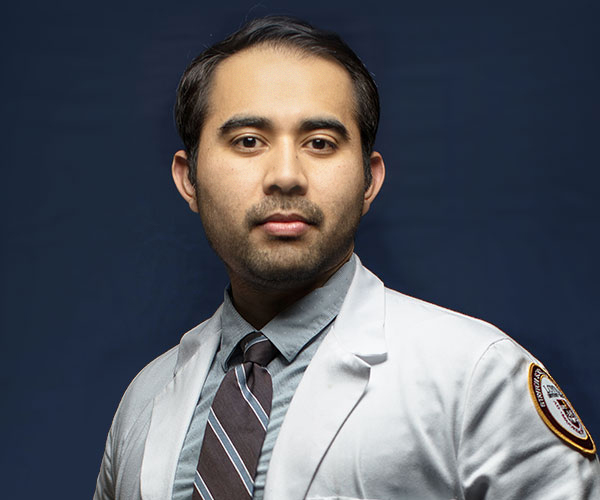
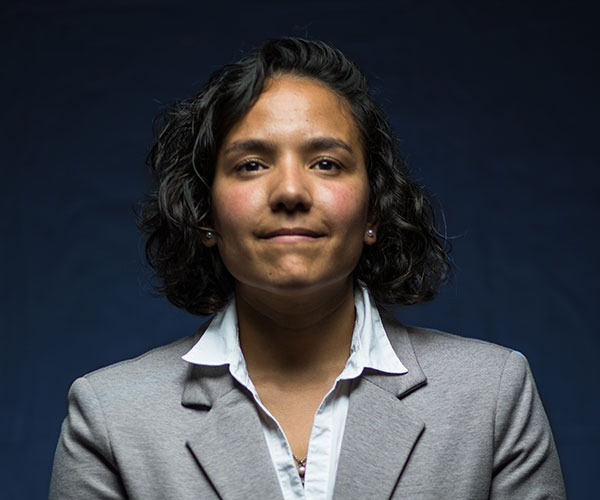
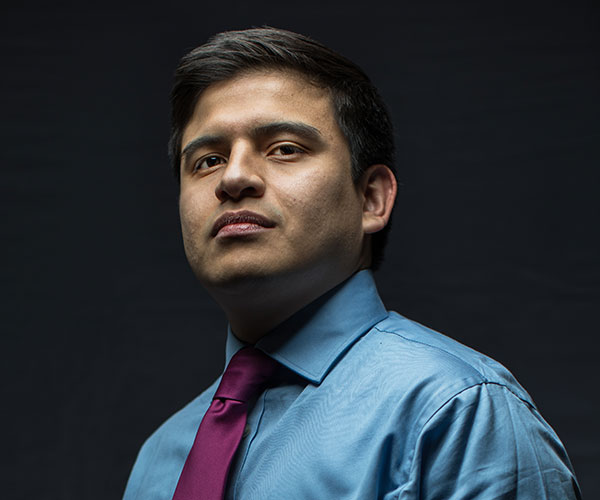

Portraits by Lukas Keapproth
‘We made it this far. We will be doctors.’
They were the first undocumented students to openly attend the first medical school in the country to accept applicants with DACA status. And now they are one step closer to achieving their dreams.
The empty champagne glass wiggled nervously between Ever Arias’ fingers. The ritual nervous energy of Match Day thrummed among his classmates in the room. Just a minute or two left to wait. Arias was used to waiting, used to not knowing, used to his fate being decided by people who didn’t know much about him. Arias could wait a little longer.
* * *
The beginnings of the Stritch School of Medicine accepting Deferred Action for Childhood Arrival (DACA) students started in traffic on 290 East. Former Dean Linda Brubaker and Mark Kuczewski, professor and director of the Neiswanger Institute for Bioethics, were driving to Loyola’s Lake Shore Campus. Kuczewski’s interest in the plight of undocumented immigrants started after seeing immigration ethics cases at Loyola University Medical Center. That interest turned to action when he was forwarded an e-mail from a math professor at Loyola Marymount University, who spoke of a gifted student who wanted to be a doctor, but who was undocumented.
Undocumented people do not have work permits, which are required to have a residency after medical school graduation. They also cannot take out federal student loans. But in June 2012, President Barack Obama announced the creation of DACA, stating that, “It makes no sense to expel talented young people, who, for all intents and purposes, are Americans.”
DACA gave young undocumented people a work permit, which opened doors that once seemed locked forever: Driver’s licenses. Jobs. Private college loans.
The e-mail about the undocumented student in California who wanted to be a doctor was still in Kuczewski’s inbox. Brubaker turned to Kuczewski in traffic and said, “I think we should try to take one of them.”
“I was so determined to get here and at times I wonder, was that me being naive? I think if anything that was a good thing, me being naive or stubborn, because it led me to Stritch. It made it all worth it.”— Aaima Sayed
Stritch ended up accepting not one, but six. For those six members of the first Stritch class to accept DACA students, becoming a doctor was always the goal. It was getting there that was always unknown.
They were born in Mexico, Venezuela, Ecuador, and Pakistan. They grew up in Memphis, Los Angeles, Orange County, Houston, Boulder, and Chicago. They learned English, excelled in classes, volunteered in their communities. Many had no idea they were undocumented until they tried to get a driver’s license or apply to college.
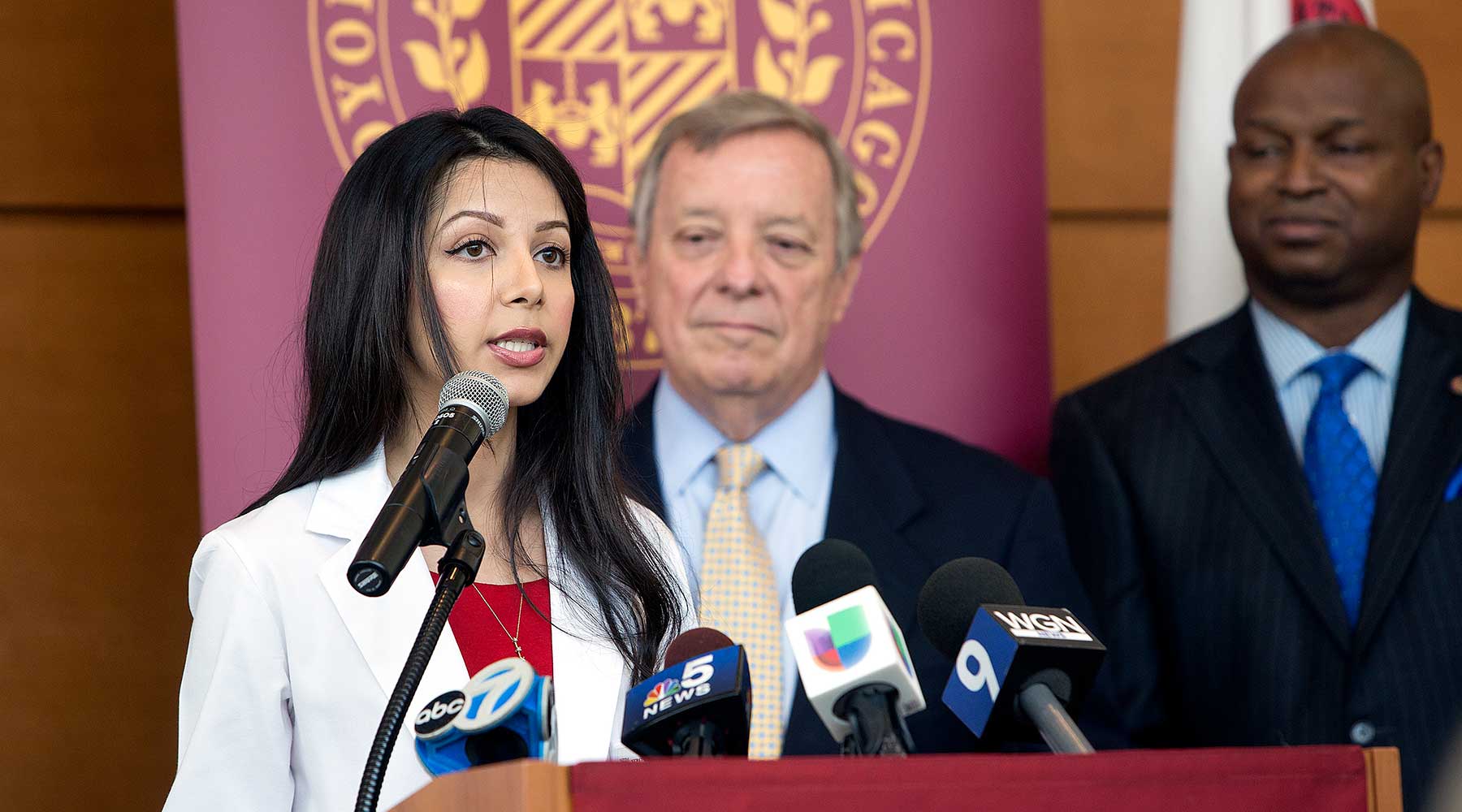
Stritch student Aaima Sayed speaks during a press conference last September on the U.S. government's decision to rescind DACA as U.S. Senator Dick durbin looks on. By Erik Unger
“I remember filling out college applications, and the immense fear and frustration of how do I fill out that little line that says what your citizenship status is… I didn’t say undocumented or illegal, I just said none,” said Johana Mejias-Beck, one of the first six DACA students admitted to Stritch.
Most incoming college students apply for student loans through the government, writing in their social security number without a second thought. The six students got into college on their merits and paid with private scholarships or working multiple jobs with their parents. Rosa Aramburo was valedictorian of her high school class. “But when they told me to get my speech ready, I had no idea if I was going to be able to go to college,” she said. A few days later, she was offered a full scholarship from Loyola Marymount University.
The students graduated college, still undocumented. Going to medical school was still their goal, their resolve sharpened by experiences growing up.
Diana Andino worked as an assistant at a neuro-opthalmologist’s office. Aaima Sayed had a health scare in college, and was touched by the compassion of her own doctors. Aramburo volunteered at a hospital, excelled enough that she observed open heart surgery. Manuel Bernal interpreted for his family at free clinics.
“I took classes, I did research, I did everything I was supposed to do with the idea that I would one day be enrolled in medical school, regardless of my immigration status,” said Bernal.
DACA was announced, to their disbelief. They got the papers that kept their medical school dreams at arm’s length for so long. But would any school accept them?
They all found the same online message board called “Pre-health DREAMers,” for undocumented students wanting to be medical professionals. They spent hours scanning the admissions policies of every medical school across the country. They noted something different about Loyola’s Stritch School of Medicine.
Stritch changed its admission policy to say it accepts DACA students, the first medical school to do so in the country. Applicants with DACA status were given equal consideration as every other Stritch applicant—their MCAT scores, grades, interview, and extracurriculars were all weighed against their fellow medical school hopefuls. The school created a website for DACA applicants, with “Welcome!” emblazoned on the top. This word was vital.
“I was at work, and remember seeing the number from Chicago and my heart was pounding,” said Andino. “I found out I got in and cried with my coworkers. It was the first step of knowing I would be a doctor.”— Diana Andino
“We had to tell them we’re not just tolerating you,” said Kuczewski. “If you qualify to get in, you are welcome here like everyone else.”
It was a word the students didn’t hear often. So they applied and interviewed, describing their visits to Stritch like all applicants: it felt like a community, a family. Getting accepted was the beginning of a dream realized.
“I was at work, and remember seeing the number from Chicago and my heart was pounding,” said Andino. “I found out I got in and cried with my coworkers. It was the first step of knowing I would be a doctor.”
The Next Step
The six DACA students matched and will begin their residencies at the following institutions:

Diana Andino
Neurology, Loyola University Medical Center

Rosa Aramburo
Surgery, Loyola University Medical Center

Ever Arias
Internal Medicine, University of California-Irvine

Manuel Bernal
Emergency Medicine, Advocate Health Care

Johana Mejias-Beck
Internal Medicine-Pediatrics, University of Missouri, Kansas City

Aaima Sayed
Psychiatry, Loyola University Medical Center
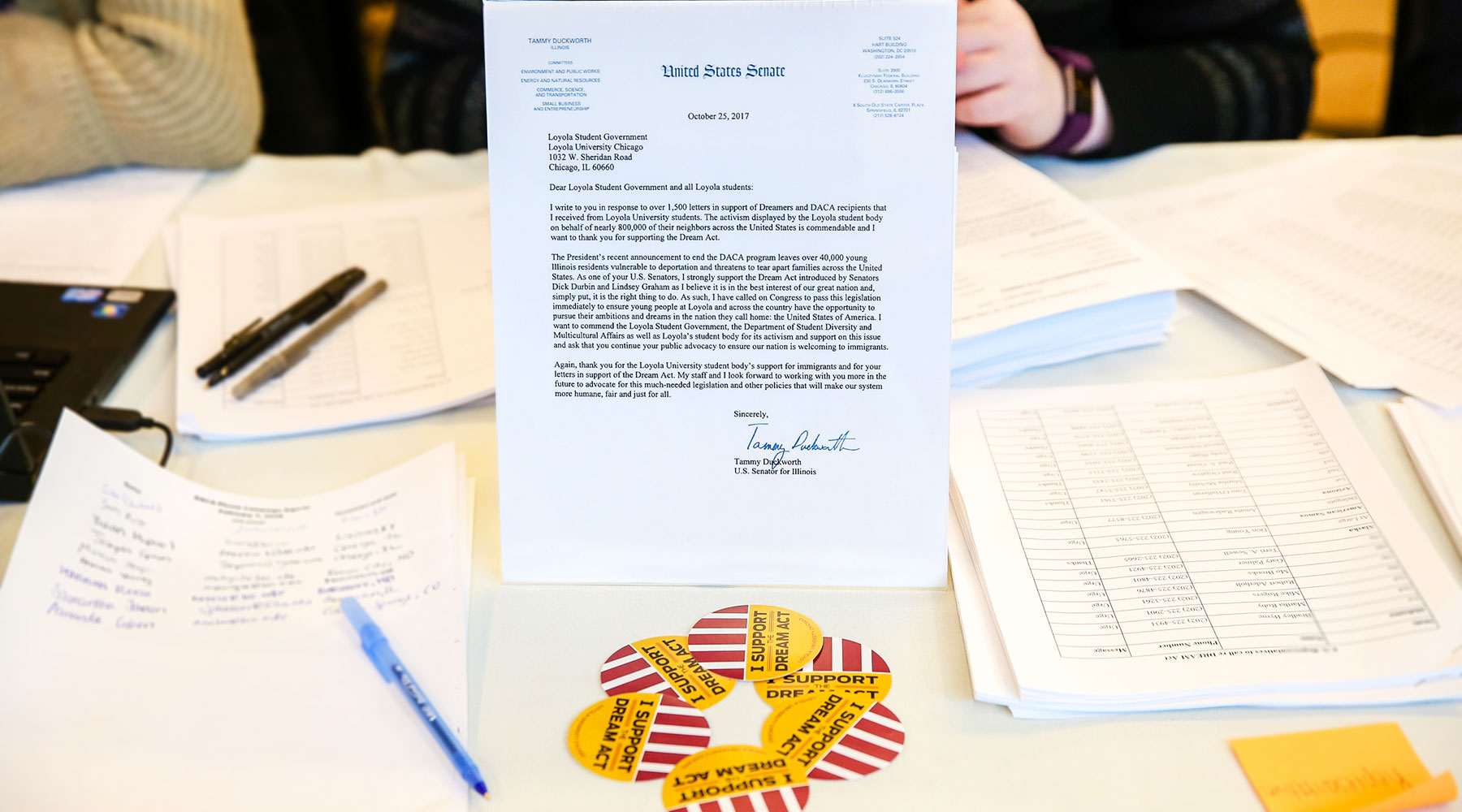
Student Diversity and Multicultural Affairs held tabling events for the Dream Act for students, faculty, and staff to get information to call their congressmen and women regarding the Dream Act. By Katie Wall
When DACA was first announced, Arias went to lunch with a friend. They took napkins and wrote down all the different possibilities—what if it was a trap? What would the government do with their information? Could their families end up getting hurt?
After watching other people receive DACA with no incident, Arias applied himself. Then he started looking for other DACA recipients who were applying to med school, and found them and Loyola through the Pre-health DREAMers message board.
“I remember the homepage saying we welcome you,” he said. “That was all I needed, someone to say our doors are open and that they’re willing to take me based on my merits.” His interview was the first time he left California, he was scared of the cold. But right away, Arias felt like Stritch was a place that understood him, and understood why he wanted to be a doctor.
“I felt really privileged to be able to come here because I knew other students of my own background who maybe applied and didn’t get an interview, they didn’t have the same chance I had,” Arias said. “I was very nervous, because I knew if I got in, I would be going here. This was the only shot I had.”
* * *
Since Stritch first welcomed DACA applicants in 2014, there are now 32 DACA-status students across four classes. At least 82 percent of the national pool of DACA recipients applied to Stritch in 2018, and one-third of the total DACA student population enrolled in medical schools are now at Stritch. These students were the very start of a program that has since gained national recognition.
For the DACA students, their first day of medical school started with TV cameras trained on them, flanked by U.S. Sen. Dick Durbin, former Illinois Governor Pat Quinn, and members of the Illinois Finance Authority, who funded the students’ loans. After years of feeling burdened by her immigration status, Mejias-Beck stepped up to a podium and made her intentions clear: “I am forever grateful for the opportunity Stritch has given me because they believe in my abilities to one day becoming a successful, practicing physician.”
Most of the students had no idea they would have fellow DACA classmates. An immediate community formed among them, as they shared stories of not being able to get into R-rated movies, of working multiple jobs to pay for college, of living a life mostly in the shadows.
“I didn’t know anyone else who was undocumented let alone undocumented and pursuing an academic career or post-grad plans,” said Bernal. “Everything I was designing was first hand.”
Their first three years of medical school were filled with anatomy, boards, and clinicals. Sleepless nights studying and 12-hour rotations in the ICU, operating room, clinics. They volunteered as interpreters at the Access to Care clinic, which serves uninsured and underinsured patients, some of whom are undocumented themselves. “I can connect with those patients . . . I know their struggles,” said Aramburo. “They trust me because they know I’ve gone through the same things.”
Despite making it to medical school, the struggles of being undocumented were never far from their minds. “We realized this was always a gift,” said Andino. “This could be taken away at any time. We all knew that but we wanted to ignore it.”
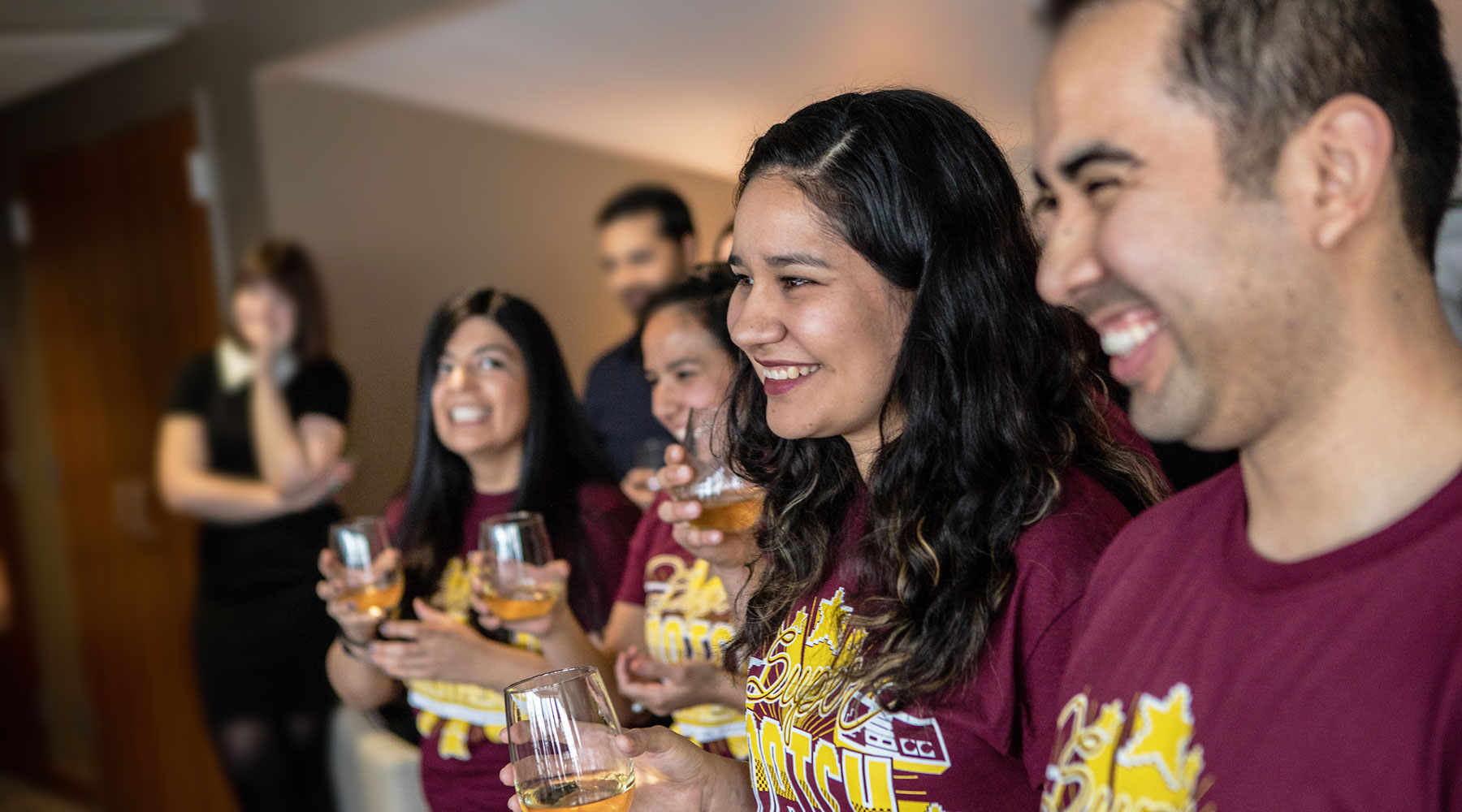
The six DACA students gather prior to Match Day 2018 events at Loyola University Chicago's Stritch School of Medicine. By Heather Eidson
Match Day, arguably the biggest milestone in a medical student’s career, seemed within reach during the autumn of their fourth year. They chose their specialties. Bernal loved the chaos of emergency medicine. Sayed liked the healing power of words in psychiatry. Andino, inspired by her mentors, chose neurology.
President Donald Trump campaigned on the promise that he would rescind DACA. With his election, the uncertainty they pushed away during medical school returned. In September, DACA was rescinded.
“I was so determined to get here and at times I wonder, was that me being naive?” said Sayed. “I think if anything that was a good thing, me being naive or stubborn, because it led me to Stritch. It made it all worth it.””
Still, they applied to residencies and got more interviews than expected. Students and their supporters were hopeful the programs would judge them based on their merits—just as Stritch had when it accepted them—and not the uncertainty of their DACA status. “They have to keep going, so we keep going, because they are us, they’re our students,” said Kuczewski. “They’re the future of medicine.”
Along with more than 30,000 medical students across the country, 157 students at Stritch opened their match envelopes with shaking hands. Dean Steve A. N. Goldstein, MD, PhD, FAAP, noted the presence of the first class of DACA students in his remarks. “As our students open their Match Day envelopes, we celebrate the physicians they have become. Their personal goals and remarkable talents are individual, but they all carry forward the Loyola mission of dedication to service for others,” he said. “One of our school’s core strengths is its diversity, and this is seen today as our first DACA status students go forth as champions of social justice to provide care for the underserved across the country.”
“One of our school’s core strengths is its diversity, and this is seen today as our first DACA status students go forth as champions of social justice to provide care for the underserved across the country.”— Dean Steve A.N. Goldstein, MD, PhD
The DACA students were scattered across the atrium, surrounded by family and friends. They celebrated that they will soon be practicing doctors in Missouri, California, and Illinois. It was paying off, finally. For Bernal, who wasn’t sure undergraduate lab research would help him get into medical school. For Andino, who was brushed off by her coworkers when she told them she would become a doctor one day. For Aramburo, who unknowingly started the ripple that would become the Stritch DACA program by sharing her dream with a professor who saw her potential. She and the five others still won’t be deterred by uncertainty. “It’s going to work out. We’ve made it this far,” she said. “We’re going to be doctors.”
As part of their loan packages, the students will return to Illinois after residency and work four years in a hospital serving an underserved population. These young people grew up in that health care setting and want to spend their careers paying it forward.
“Our underserved and undocumented populations are suffering from various things impacting their heath and being able to have those conversations and bring some kind of comfort to those patients without necessarily giving medicine is pretty special,” said Mejias-Beck.
Adds Arias: “I was 10 years old interpreting medical Spanish for my parents, which was impossible at the time. Now that I have an education under my belt, I want to be there for those patients. I want to be an advocate for patients who don’t think there’s physicians like themselves, from their own culture who speak their own language.”
32
DACA status students are currently enrolled in Stritch School of Medicine.
82%
of the national pool of DACA recipients applied to Stritch School of Medicine in 2018.
2/3
of DACA recipients are ages 25 or younger, and a majority are women.
1,800
governors, attorneys general, mayors, state representatives, judges, police chiefs and other leaders signed onto a letter supporting Dreamers and DACA.
3
Illinois has the nation’s third-largest population of DACA recipients.
Sources: Stritch School of Medicine, Pew Research Center, Newsweek, Chicago Tribune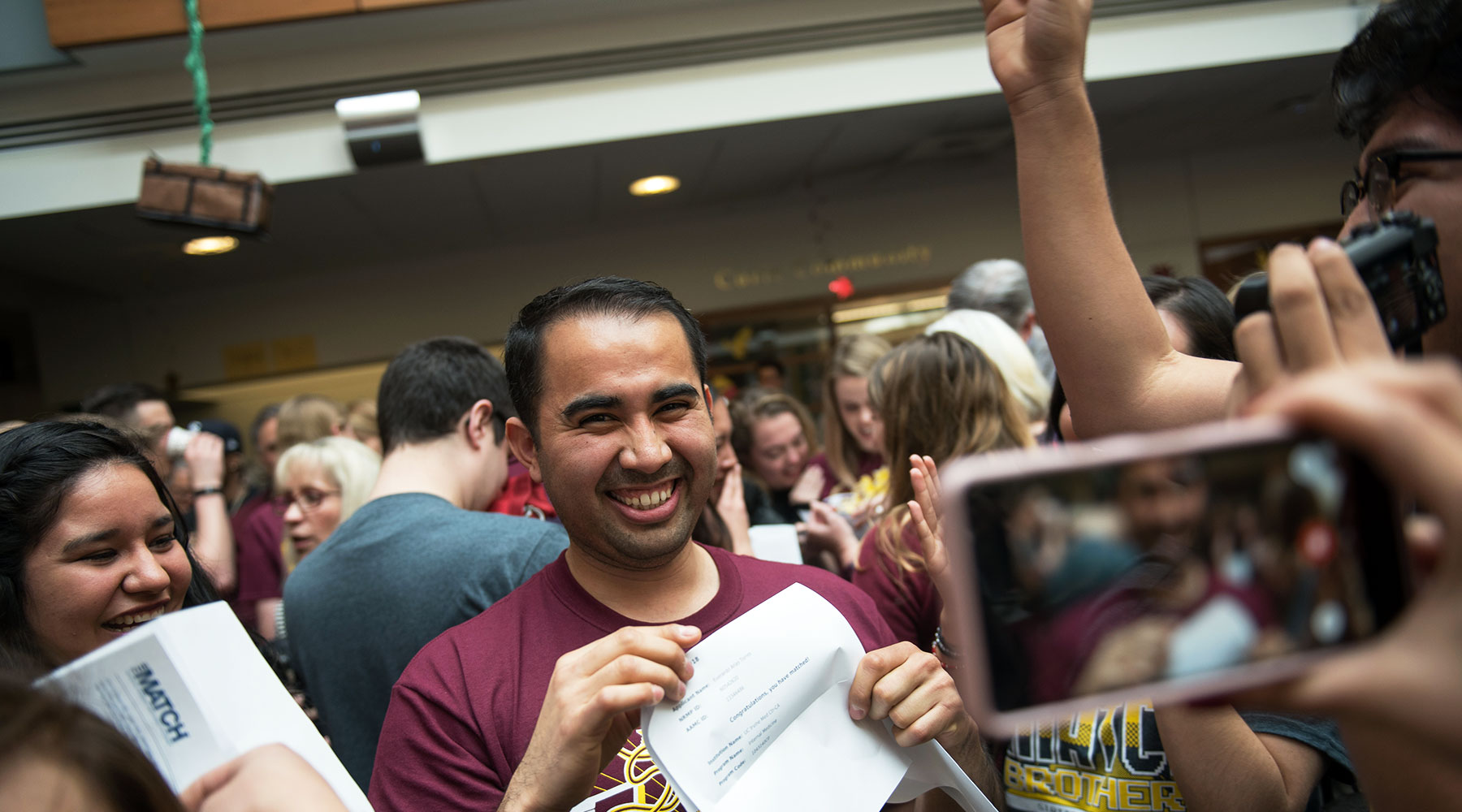
Ever Arias opens his residency acceptance letter on Match Day 2018 at Loyola University Chicago's Stritch School of Medicine in Maywood, Illinois. By Rob Hart
When he first got to the United States, the first thing 7-year-old Arias ate was chicken. As he devoured the first food he’d had since crossing the border, after being separated and reunited with his parents and two sisters, he was so confused.
“It was so good, but I was like, where’s the bones?” Arias laughed. “In Mexico we don’t have boneless chicken. This was fried chicken, and it was just the best thing.” Just as vivid is the memory of his dad telling him stories of crossing the border to find work. How he wrote notes and kept them in his pockets, so if he died there would be messages of love for his family.
“That’s truly to this day what I think about,” Arias said. “It motivates me to continue to push myself and let people know there’s also a humanistic point of view to immigration. It’s not just political.”
Almost exactly four years before Arias opened his Match Day envelope—University of California-Irvine Medical Center, 10 minutes from his parents’ house—he received a phone call from a Chicago area code.
He keeps the voicemail on his phone as a reminder of what he’s achieved. After years of being told no, of having to hide, of waiting. After years of being fueled by ambitions and dreams alone:
“This message is for Everardo Arias . . . I’m calling you to congratulate you. You’ve been accepted to medical school, my friend. We’re very proud of you.”
They did it, but not without a little help
Though Stritch opened the door for DACA applicants, many people and organizations have leant a helping hand in growing the program over the past four years:
Dean Steven A.N. Goldstein, MD, PhD
When DACA was rescinded in September 2017, Dean Goldstein met with the entire DACA cohort and provided reassurance that Stritch would continue to support them during these uncertain times. He also wrote letters of support for the fourth years to send to their potential residency programs, noting they were students in good standing and should be given fair consideration.
Mark Kuczewski, PhD
In addition to helping start the Stritch DACA program, Kuczewski has supported and advocated for the DACA students in countless, immeasurable ways since 2014. “It’s probably been the greatest honor of my career to work with these particular students,” he said. “They’re people of enormous faith, talent, and drive.”
Illinois Finance Authority (IFA)
Under Gov. Pat Quinn, the IFA agreed to provide loan packages for the initial DACA students in 2014 in exchange for four years of work in an underserved community in Illinois upon completion of their residencies. The IFA funded 12 student loan packages in the Classes of 2018 and 2019. Gov. Bruce Rauner has also been supportive of the IFA’s loan program and Stritch’s DACA program.
Senator Dick Durbin
Sen. Durbin has been a longtime proponent of legislation that would allow DACA recipients a pathway to permanent citizenship. He has told the stories of Stritch students on the Senate floor and invited students to Washington, DC, to share their aspirations and lobby for immigration reform.
Resurrection Project
A community development nonprofit started by six Chicago churches, the Resurrection Project has funded loans for students in the Classes of 2019 and 2020. It also provides immigration services and assists with DACA renewals and citizenship workshops.
Trinity Health
The health care system, which owns Loyola University Medical Center, was a key loan provider for the students in the Classes of 2019 and 2021. Three of the students in this year’s graduating class will complete their residences at LUMC.



